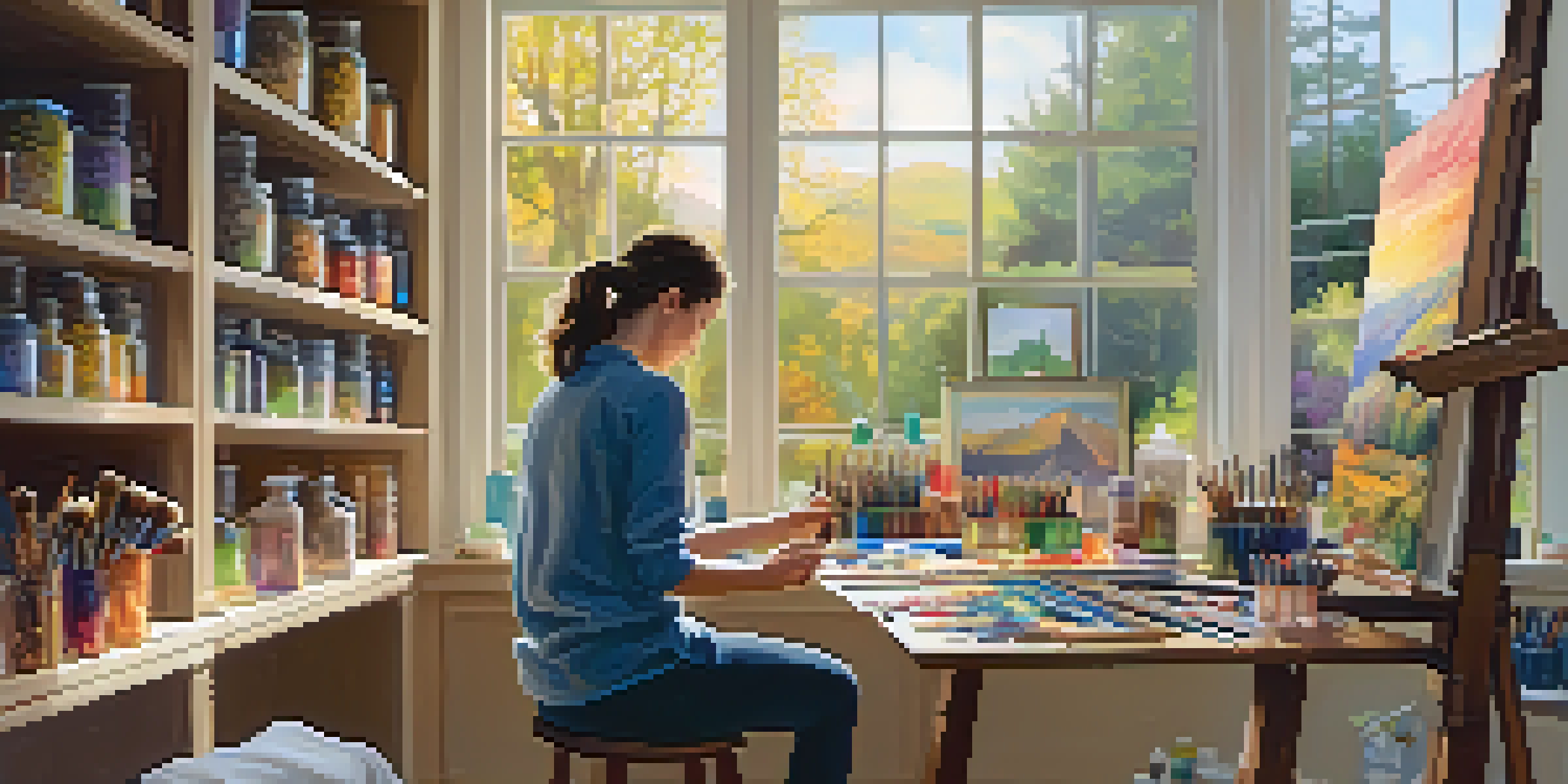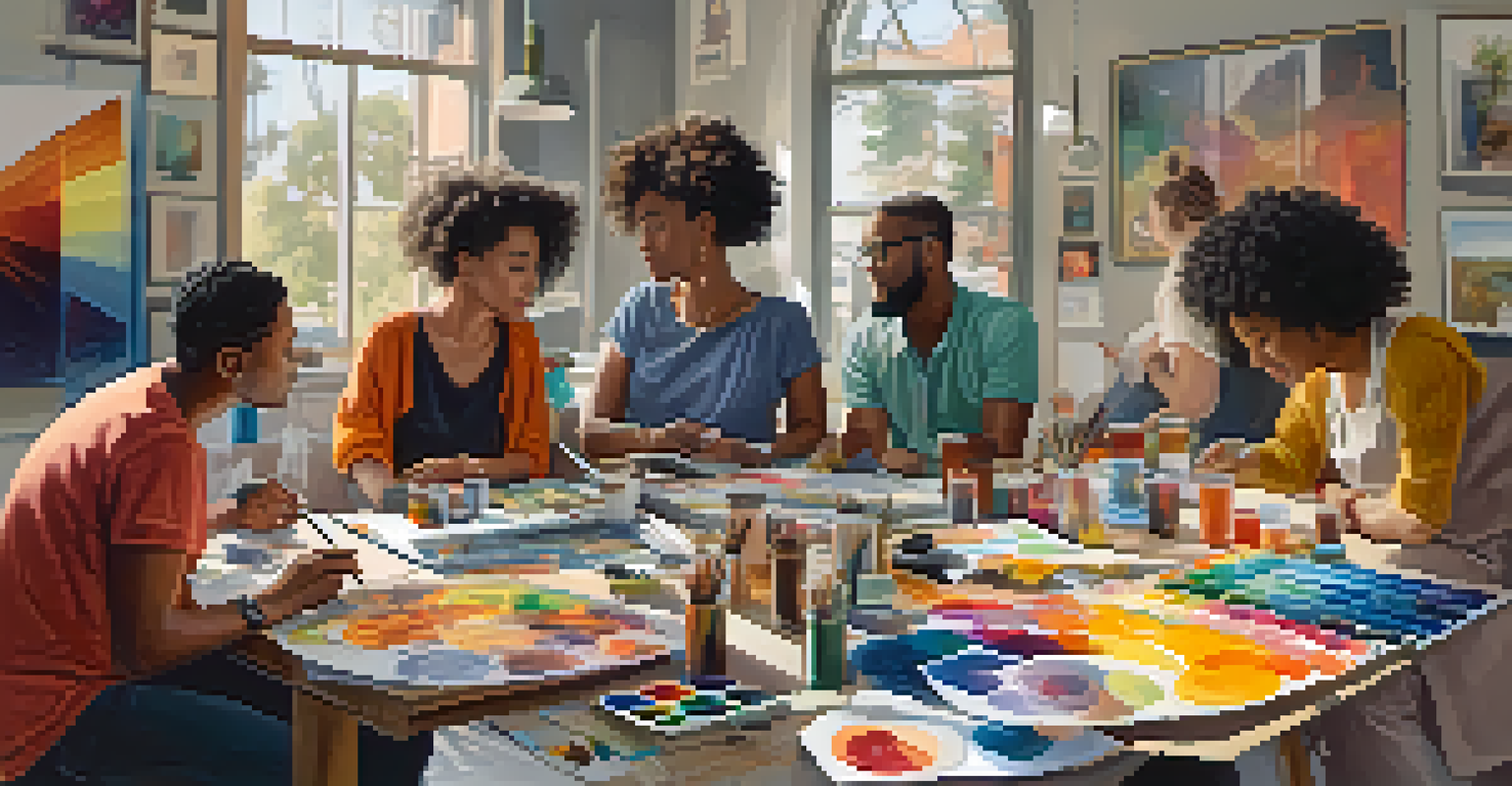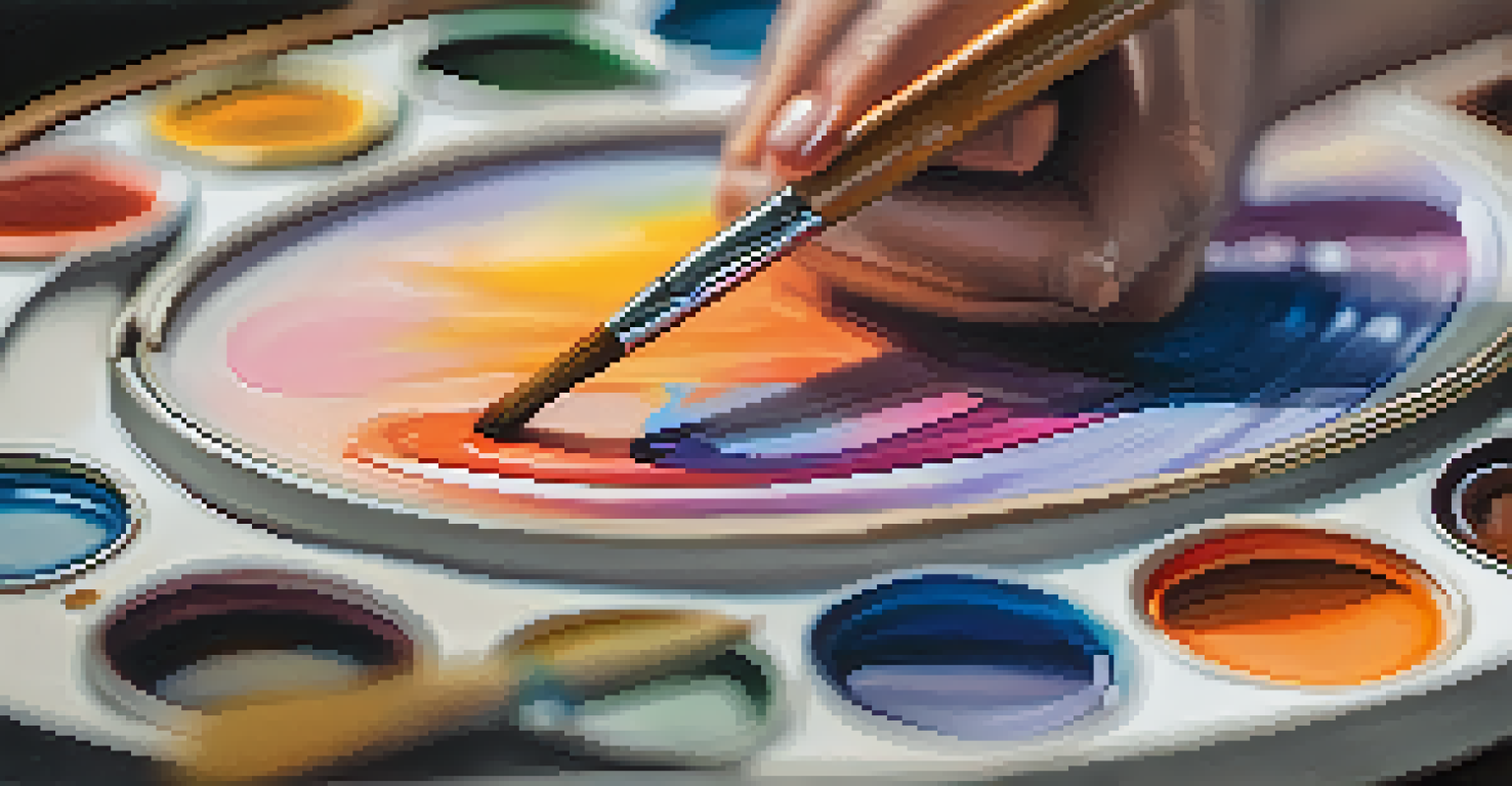The Impact of Online Tutorials on Art Skill Development

The Rise of Online Art Tutorials in Recent Years
In the past decade, the internet has transformed the way we learn. Online art tutorials have surged in popularity, offering aspiring artists an accessible way to develop their skills. With platforms like YouTube, Skillshare, and even Instagram, artists can find countless resources tailored to their specific needs.
Art is not freedom from discipline, but disciplined freedom.
This shift has democratized art education, allowing anyone with an internet connection to learn from talented artists and instructors. Unlike traditional art schools, which can be expensive and geographically restrictive, online tutorials provide a flexible alternative for diverse learning styles.
As a result, many are picking up brushes and pencils from the comfort of their homes, leading to a vibrant community of self-taught artists. This trend not only fosters creativity but also breaks down barriers to entry in the art world.
Accessibility: Learning Art Skills Anytime, Anywhere
One of the most significant advantages of online tutorials is their accessibility. Artists can learn at their own pace, revisiting lessons as often as needed without the pressure of a classroom setting. This flexibility allows individuals to integrate art into their busy lives, making it easier to fit in creative pursuits.

Moreover, the variety of formats—video, written guides, and interactive content—cater to different learning preferences. For example, visual learners might thrive in video tutorials that demonstrate techniques, while others may prefer step-by-step written instructions.
Accessibility of Online Art Learning
Online art tutorials provide flexible and affordable access to diverse learning styles, enabling anyone to develop their artistic skills at their own pace.
As a result, artists of all levels, from beginners to advanced, can find resources that resonate with their unique learning styles. This personalized approach fosters a deeper understanding and retention of skills.
Building Community Through Online Art Platforms
Online art tutorials do more than just teach skills; they create a sense of community among artists. Platforms often include comment sections, forums, or social media groups where learners can share their progress, ask questions, and receive feedback. This sense of belonging can be incredibly motivating for budding artists.
Creativity takes courage.
Community engagement also allows artists to connect with others who share their passion, opening doors to collaboration and inspiration. For instance, an artist might post their work on Instagram using a tutorial hashtag, leading to meaningful interactions with fellow creatives.
Ultimately, this network of support helps nurture an artist's growth and development. The encouragement and constructive criticism from peers can significantly enhance one's artistic journey.
Variety of Techniques and Styles in Online Tutorials
Online tutorials offer an impressive array of techniques and artistic styles, catering to diverse interests. Whether you're drawn to watercolor painting, digital art, or sculpture, there's likely a tutorial available to guide you. This abundance allows artists to explore different mediums and find what resonates with them.
Furthermore, the ease of switching between tutorials means artists can experiment without commitment. If one method doesn’t click, they can quickly try another until they find their niche. This exploration can lead to unexpected discoveries and personal growth.
Community Engagement for Growth
These platforms foster a supportive community where artists can share their work and receive constructive feedback, enhancing their artistic journey.
By sampling various techniques, artists can develop a well-rounded skill set that enhances their overall artistry. This versatility can lead to more innovative and unique artistic expressions.
Cost-Effective Learning Solutions for Aspiring Artists
Another appealing aspect of online tutorials is their cost-effectiveness. Many platforms offer free content, while others provide affordable subscription options. This accessibility allows aspiring artists to learn without the burden of hefty tuition fees associated with formal art education.
Additionally, many tutorials can be found on platforms like YouTube, where users can access a wealth of knowledge without spending a dime. This financial feasibility opens the door for more individuals to explore their creativity, regardless of their budget.
The ability to learn art skills at a low cost encourages more people to pursue their passion. This environment fosters a culture of creativity and experimentation without the fear of financial repercussions.
Self-Paced Learning: Tailoring Art Education to Individual Needs
Self-paced learning is a significant advantage of online art tutorials. Unlike traditional classes with fixed schedules, learners can choose when and how long they wish to study. This flexibility accommodates various lifestyles and responsibilities, allowing for a more personalized learning experience.
For instance, someone working full-time can dedicate evenings or weekends to their artistic pursuits without feeling rushed. Additionally, learners can pause and replay sections of tutorials as needed, ensuring they fully grasp techniques before moving on.
Variety of Techniques and Styles
Online tutorials offer a wide range of artistic techniques and styles, allowing learners to experiment and discover their unique voice in the art world.
This tailored approach empowers artists to take control of their education, leading to more effective skill development. When individuals can learn in a way that suits them, they are more likely to stay motivated and engaged.
The Role of Online Feedback in Skill Improvement
Feedback is crucial for growth, and online tutorials often facilitate this process through comments and peer reviews. Many platforms encourage users to share their artwork, allowing others to provide constructive criticism. This interaction can be invaluable for identifying areas for improvement.
Moreover, some tutorial creators offer direct feedback on submitted work, creating a more personalized learning experience. This guidance can help artists refine their techniques and gain new perspectives on their art.

The ability to receive feedback from diverse sources enhances an artist's development. With insights from various viewpoints, learners can better understand their strengths and weaknesses, leading to more targeted skill enhancement.
Conclusion: Embracing the Future of Art Skill Development
The impact of online tutorials on art skill development is profound and far-reaching. By providing accessible, flexible, and diverse learning options, these resources empower aspiring artists to explore their creativity like never before. The sense of community and engagement further enriches the experience, fostering a supportive environment for growth.
As the digital landscape continues to evolve, so too will the opportunities for learning and artistic expression. Embracing these online tools can unlock a world of potential for artists at any stage of their journey.
In conclusion, online tutorials are not just a trend; they represent a shift towards an inclusive and supportive art education landscape. Whether you're looking to pick up a brush for the first time or refine your skills, there’s a wealth of knowledge waiting just a click away.